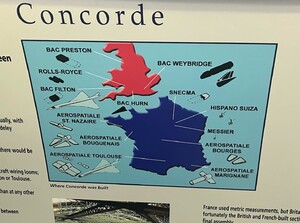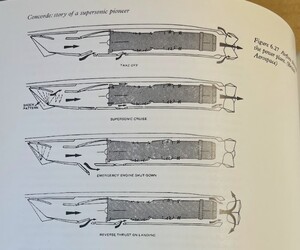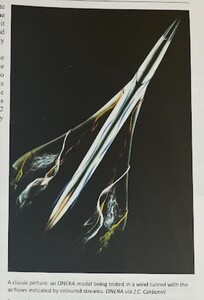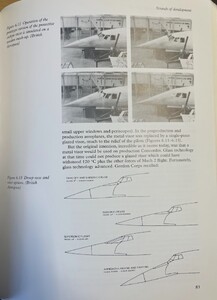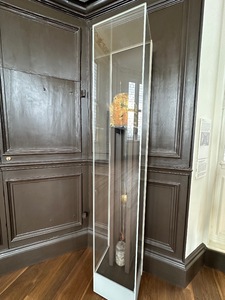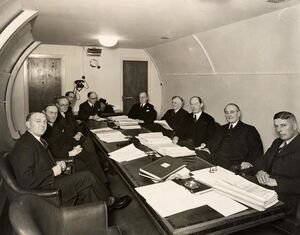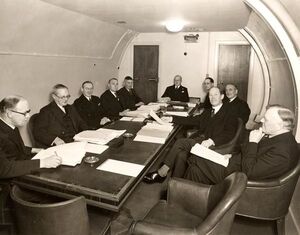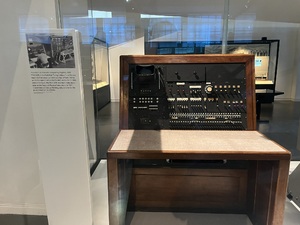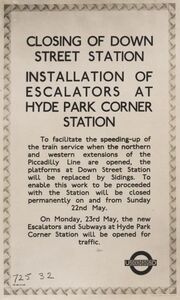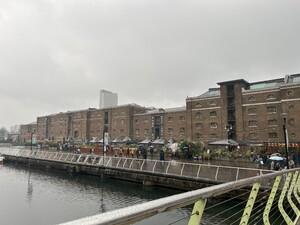
Browse Items (226 total)
Sort by:
-
Graphic of Concorde construction locations
As a collaboration between Aérospatiale and the British Aircraft Corporation (BAC), parts of Concorde were constructed in various locations in Britain and France, as shown in this graphic. This graphic originates from Brooklands Museum, a major factory for Concorde. -
Airflow through the (Concorde) power plant
Demonstration of airflow throughout Concorde power plant in different stages of flight. As the Concorde's engine could only use air flowing at about 300 miles per hour at the fastest, the power plant includes adjustable ramps to slow down airflow from Concorde's top speed of ~1300 mph to a usable range. Also include reverse thrust demonstrations. -
A classic picture: an ONERA model being tested in a wind tunnel with the airflows indicated by colored streams. (Concorde)
ONERA is a French aerospace research center, and this is a demonstration of the aerodynamics of Concorde via an ONERA model. In order to break the sound barrier, the fuselage was created to be needle-like, and the long wings were incredibly thin, making Concorde exceptionally aerodynamic. -
Concorde droop nose drawings and prototypes
Due to the nature of aerodynamic changes at supersonic speeds, Concorde's nose had to have a needle-like design to be aerodynamic enough to break the sound barrier. However, this design presented problems in visibility. This led to the iconic adjustable "droop nose" design, where the high-nose configuration was used when cruising for better aerodynamics, and the low-nose configuration was used during landing for better visibility. This source shows prototypes of the nose design and drawings of multiple nose configurations. -
Year-going clock movement, by Thomas Tompion, 1675
This clock was designed for the observation room at the Flamsteed house, and was gifted to John Flamsteed by his patron, Sir Jonas Moore. After Flamsteed's death, his wife, Margaret Flamsteed, massed produced and sold the clocks for domestic use to pay off Flamsteed's debts. -
Railway Executive Committee meeting in Down Street Underground station
The Railway Executive Committee meets in an underground room in the disused Down Street Underground station during the Second World War. Frank Pick, vice chairman of the London Transport Passenger Board Executive, is fourth from right. Down Street Underground station, off Piccadilly, provided the perfect central and safe location for the committee headquarters. Accommodation included a telephone exchange and eating and sleeping facilities. The station was also used by the Cabinet before the Cabinet War Rooms under Whitehall were ready. Down Street had not been used as a station since 1932. -
Meeting of the LT Executive in a room in the disused Down Street Underground station
Meeting of the LT Executive in a room in the disused Down Street Underground station. Frank Pick sits nearest to camera on right. -
Pilot Automatic Computing Engine (ACE)
The Pilot Automatic Computing Engine, designed by Alan Turing, held in the Science Museum, London. -
Closing of Down Street station
A magazine advertisement column is noting the closing of Down Street station -
Image of Museum of London, Docklands exterior taken from the bridge.
This is the exterior of the Museum of London, Docklands.
